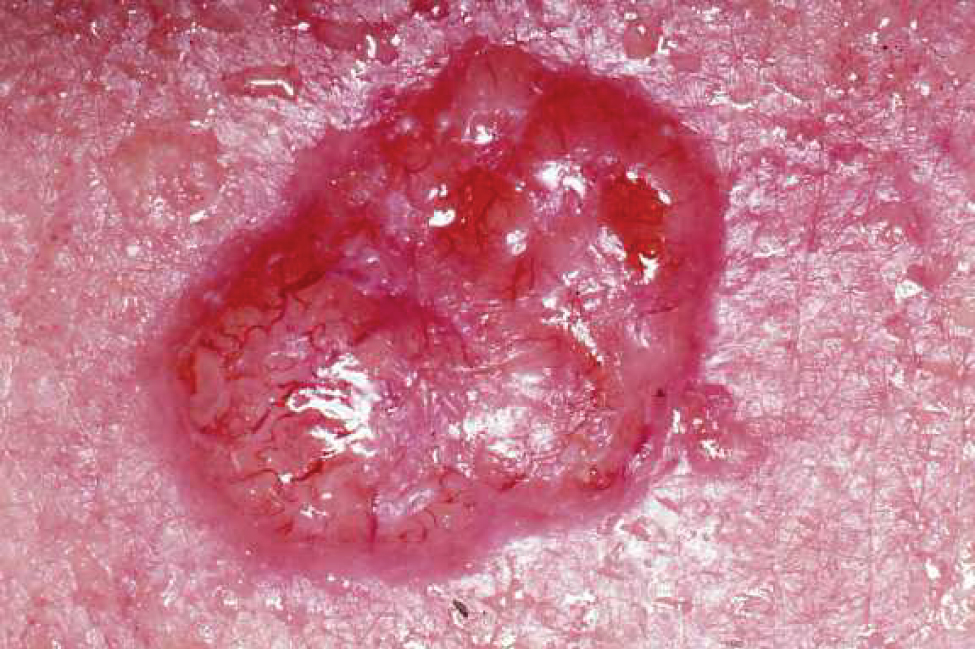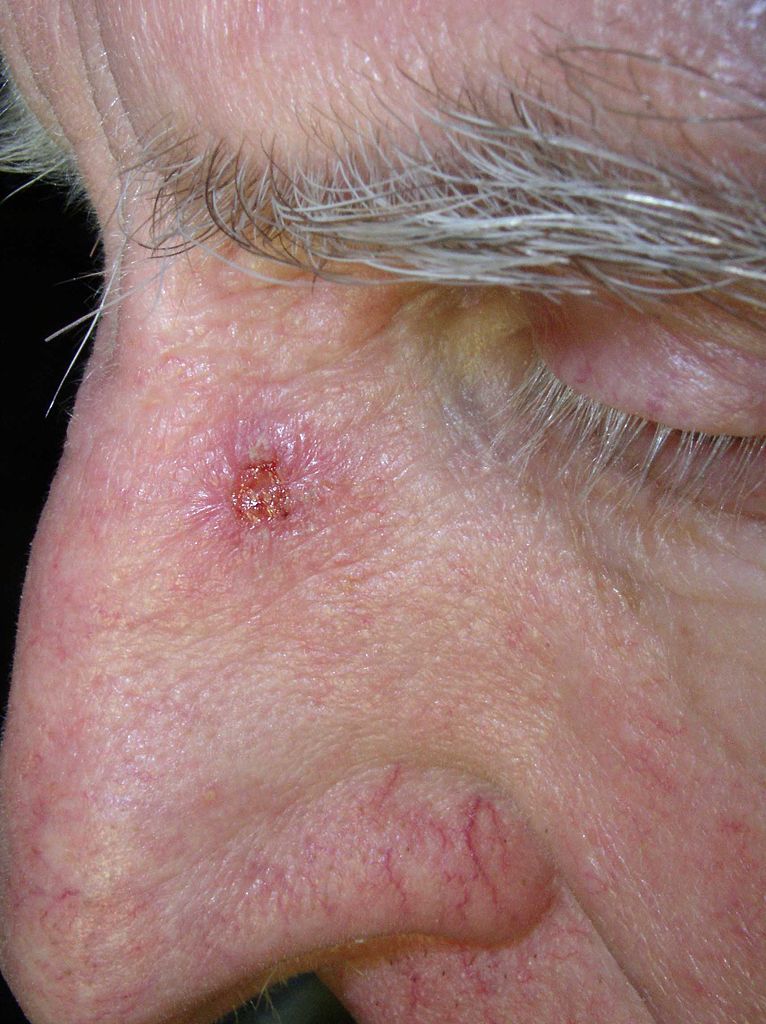Skin cancer nonmelanoma
What is skin cancer?
Skin cancer happens when normal cells in the skin change into cancer cells.
Two main types of skin cancer are melanoma and nonmelanoma.
Skin cancer occurs commonly in sun exposed parts of the body on the head, face, neck, back of the arms, hands, legs.
The risk of skin cancer increases with increased exposure to sunlight, tanning beds, UV rays.There are other noncancerous, precancerous skin lesions that can occur with chronic exposure to sunlight.
What is nonmelanoma?
Nonmelanoma is divided mainly into basal cell cancer and squamous cell cancer.
What are the symptoms?
Nonhealing skin rash which is pink, reddish, swollen, peeling repeatedly, bleeding, open sores, thick and crusty skin.
How is skin cancer diagnosed?
You should see your healthcare provider immediately.
Your healthcare provider will perform an exam and check the skin all over your body.
A 'biopsy' is done on the skin rash. After numbing the skin the rash is removed by your healthcare provider. It is sent to another healthcare provider, who looks at the skin sample under the
microscope to make sure there is no cancer.
If the Biopsy test is reported positive for cancer, further tests are ordered to make sure the cancer has not spread to other places in the body.
Further treatment is based on the type of cancer, the extent of cancer, age, and several other criteria.
How is skin cancer treated?
Surgery, radiation therapy, topical strong prescription skin creams, light therapy [photodynamic therapy].
The extent of treatment is different for different patients. Your healthcare provider will determine the treatment based on your condition.
Early treatment will prevent the cancer from spreading to the rest of the body.
What should I do after skin cancer is treated?
Is there a prevention for skin cancer?
Skin protection from sunrays, UV rays starting at a young age, or as soon as possible.
Stay out of the sun in the middle of the day between 10 AM-4 PM.
Wear sunscreen with SPF over 50, reapply frequently.
Wear UV barrier protection like wide brimmed hat, long sleeve shirts, long pants.
Avoid tanning beds.
Patients at risk for skin cancer should get annual skin checkups from their healthcare provider.
Basal cell cancer


